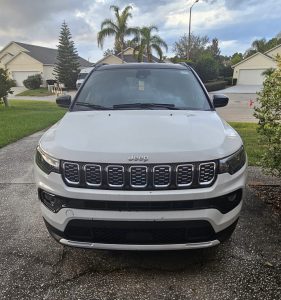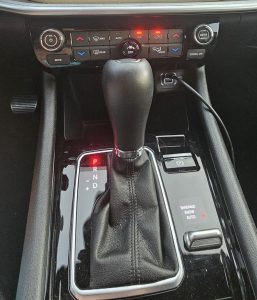Driving in Florida can be easy in many respects, which is often a pleasant surprise for visitors. The roads are generally well-maintained and straight, particularly major highways and interstates, making navigation simple. You’ll find the speed limits are often higher than in many other states, and the state is known for its flat terrain, meaning no challenging mountain passes. However, be prepared for significant traffic congestion in major metropolitan areas like Miami, Orlando, and Tampa, and keep an eye out for tourists and unpredictable drivers near attractions. Overall, the ease of driving in Florida is high, provided you anticipate the heavy traffic in popular locations.
Know Your Vehicle

You just got the keys to your rental car and you’re sitting in the parking lot. Take five minutes to familiarize yourself with the basic instruments like lights, washers, and wipers. Some rental cars also have a foot brake (which acts as your parking brake); you activate and deactivate these simply by pressing down with your foot.
Note: Florida law requires drivers to turn headlights on when wipers are in use, including during any rain, smoke, or fog.
Tip: If you’re unhappy with your vehicle, report it immediately.
Automatic Transmission

Most rental cars have automatic transmission. The simple rule: Drive using only your right foot, and tuck your left foot out of the way. This reduces the urge to apply the brake with your left foot. If your vehicle has powered doors, remember they only activate when the vehicle is in park mode.
Ready to Go
You have your driver’s license and documentation from the car hire company; it’s time to set off. All occupants must wear seat belts at all times.
If you have a satellite navigation system, set it now. If you flew into Orlando International Airport, it probably won’t pick up a signal until you clear the parking lot. Also, have some cash on hand to cover the cost of any toll roads you may encounter.
Tip: Remember that many smartphones have sat-nav apps that don’t use your data, an ideal way to find your way without incurring additional costs.
On the Open Road
Contrary to some people’s perceptions, Florida’s roads aren’t racetracks; in fact, they’re generally more sedate than those in the U.K. The maximum speed limit is 70 mph, though most roads have limits between 55 and 65 mph. Speed limits (both maximum and, in some cases, minimum) and other road signs are clearly visible on gangways above the road.
Tip: Keep a hard copy of your route handy. Google Maps is great for this.
Passing (overtaking) on both the left and right is common practice in Florida. While I don’t suggest you participate in excessive lane-changing, don’t be alarmed to see vehicles passing either side of you. Just be aware of this and use your mirrors when manoeuvring. You’ll soon notice the distinct lack of roundabouts; they are rare in this part of America. Many roads are long and straight, giving you great visibility of the road ahead.
Through the Lights
Traffic lights hang suspended above the junction they control. Note that in some cases, the light changes from green to red without an amber (yellow) phase. A junction with a flashing yellow light signals drivers to navigate through the junction with caution.
If you approach a traffic light intersection intending to turn right, and the lights show red, you may still turn after a complete stop, unless signs say otherwise. You must yield to all pedestrians and cross-traffic.
Stop!
Stop signs are common on Florida’s roads. Drivers must adhere to them at all times; there are no exceptions, and a breach constitutes a traffic violation. These signs are clearly visible.
Law Enforcement
If a law enforcement officer asks you to pull over and stop, do so at the earliest and safest opportunity. DO NOT get out of your vehicle; remain inside. The law requires all drivers to produce a valid license upon request, so you must carry your license at all times.
Move Over Law: If you see an emergency vehicle, service vehicle, or any disabled vehicle displaying flashing warning lights parked at the side of the road, you must move over to the next lane if safe. If you cannot change lanes, you must slow down to a speed 20 mph below the posted limit (or 5 mph if the limit is 20 mph or less).
DUI
Driving under the influence of alcohol is prohibited in Florida. The best advice: Don’t drink any alcohol before driving. For adults aged 21 years or more, the legal limit is .08% Blood Alcohol Content (BAC).
Refuelling
When you visit your first service station (gas station), be aware that many operate a pre-payment system. You can often use your debit or credit card at the pump itself.
Tip: Card transactions at the pump sometimes ask for a U.S. ZIP code. If your card doesn’t have one, you’ll need to pay inside before pumping fuel.
Finally, while gas pump colour standards aren’t federally mandated, be aware that the nozzles for unleaded gasoline are often black, red, or blue, while the green nozzle is commonly for diesel. Always check the label on the pump.
Sit Back and Relax
With basic care and consideration, you will find driving throughout Florida a real pleasure, and it’s much easier than some anticipate. Give yourself plenty of time to reach your destination and enjoy the drive.


